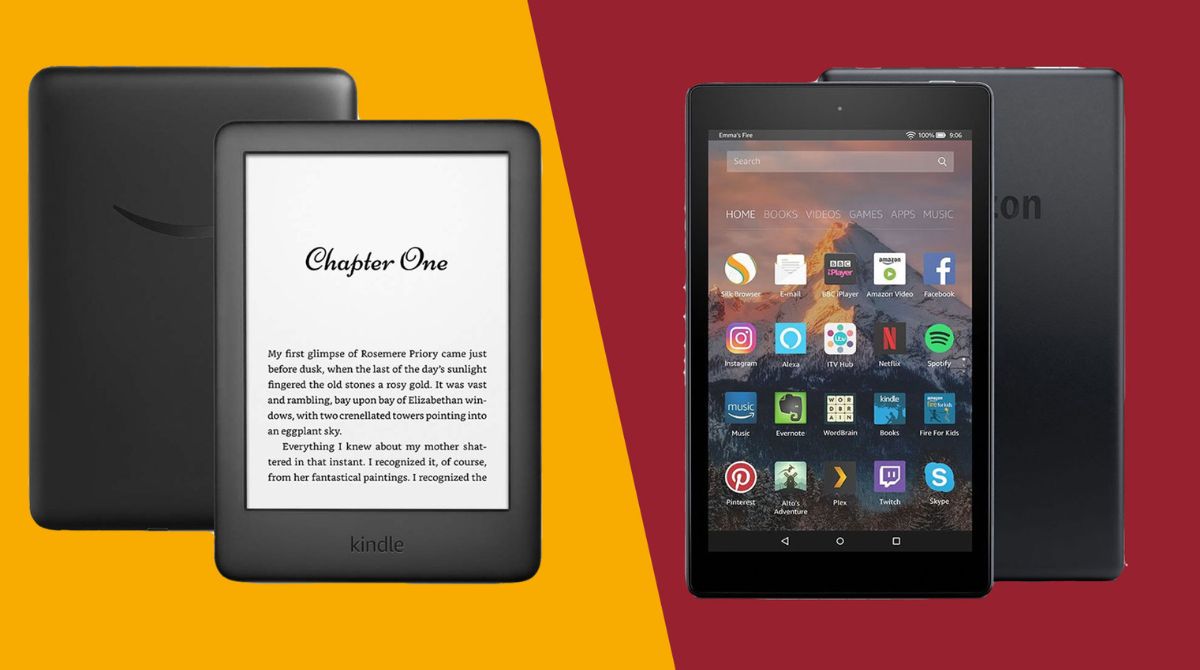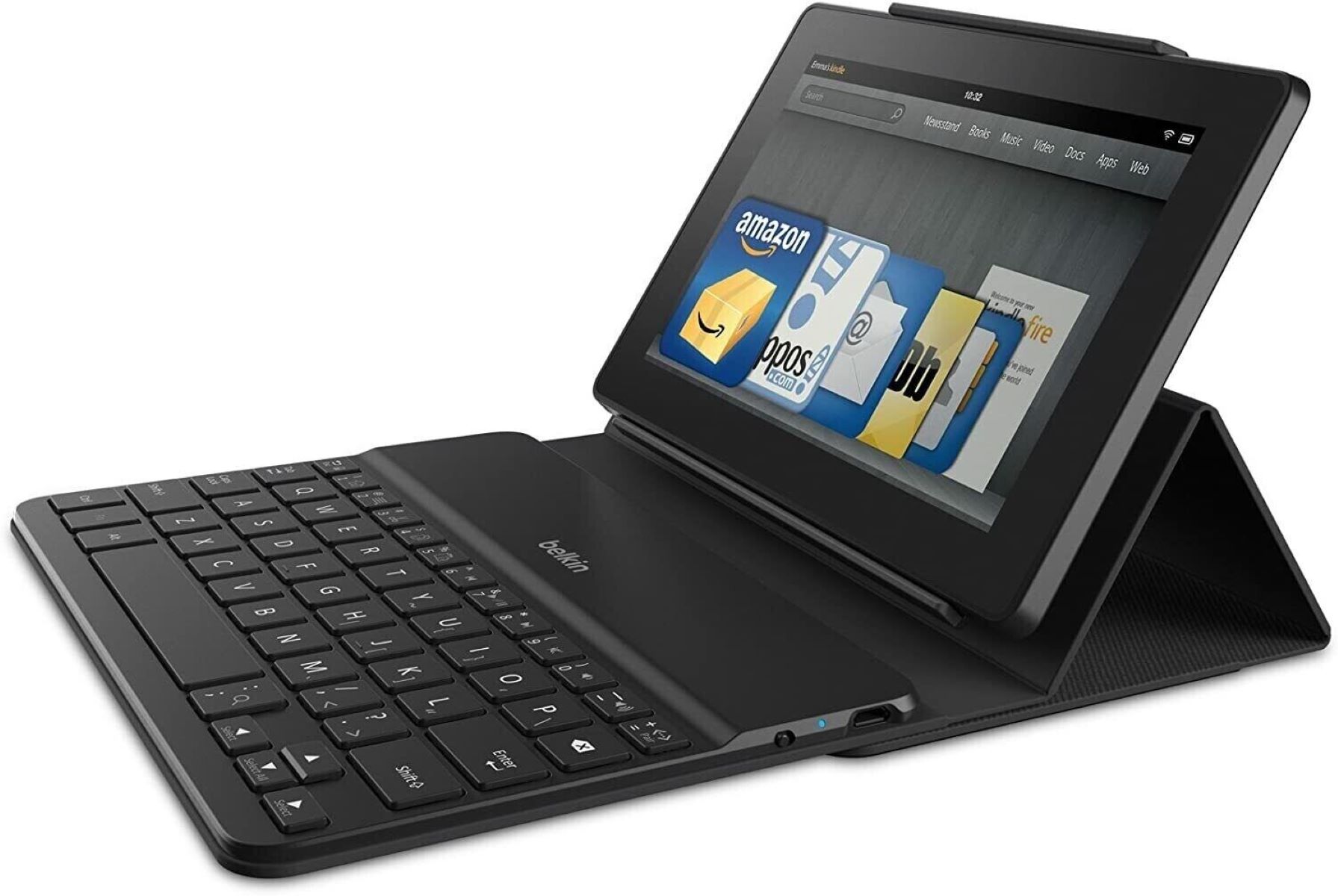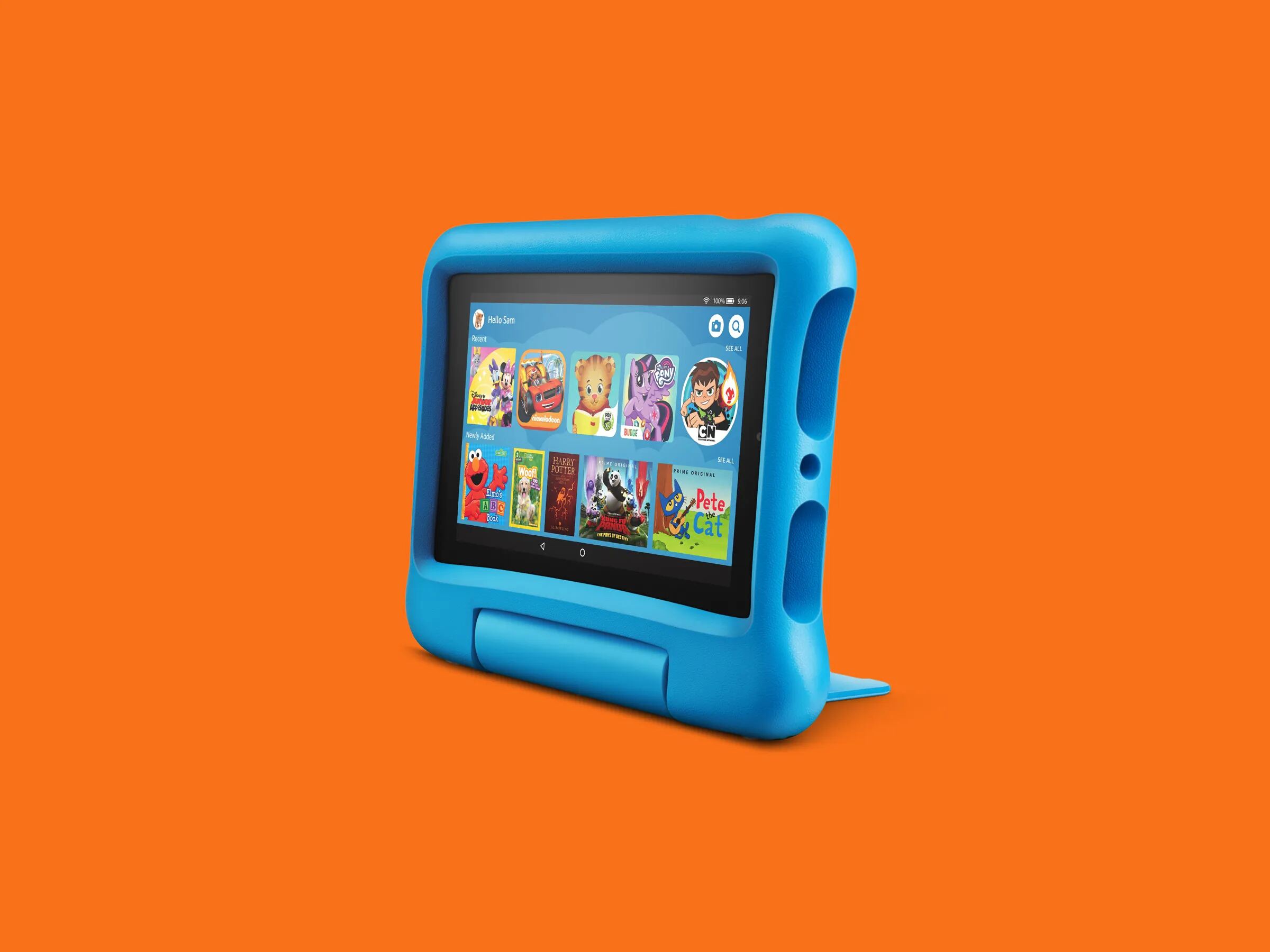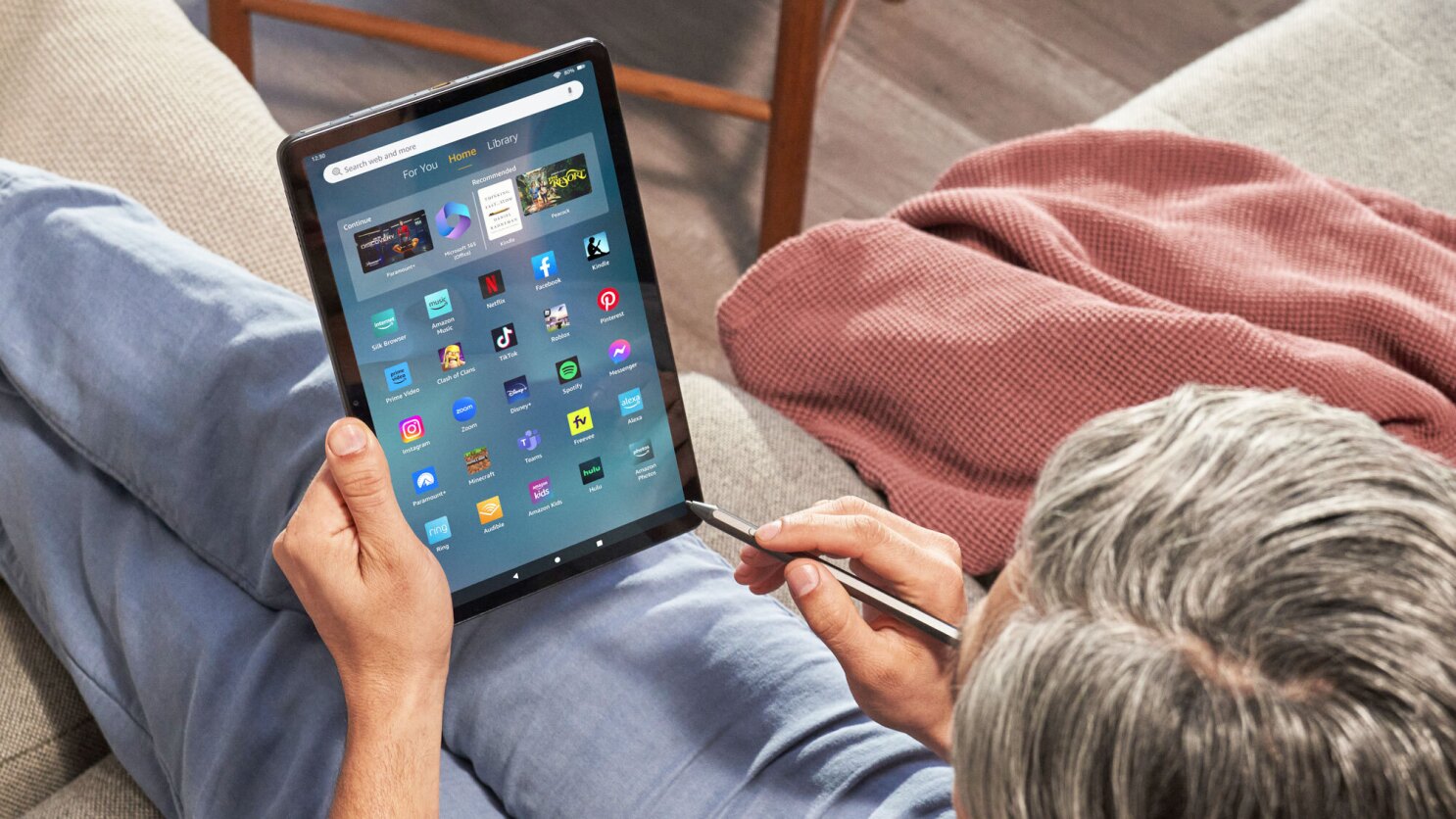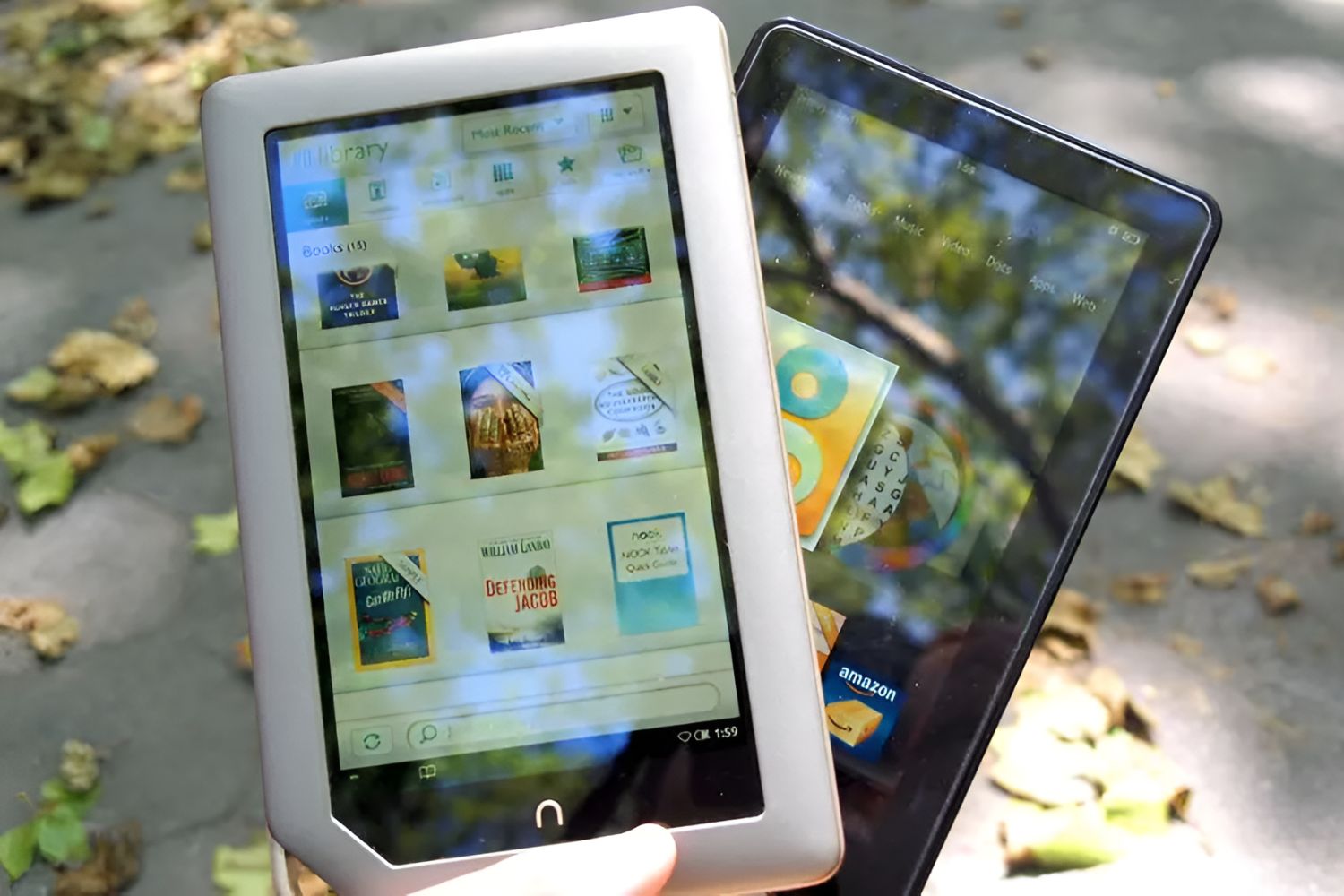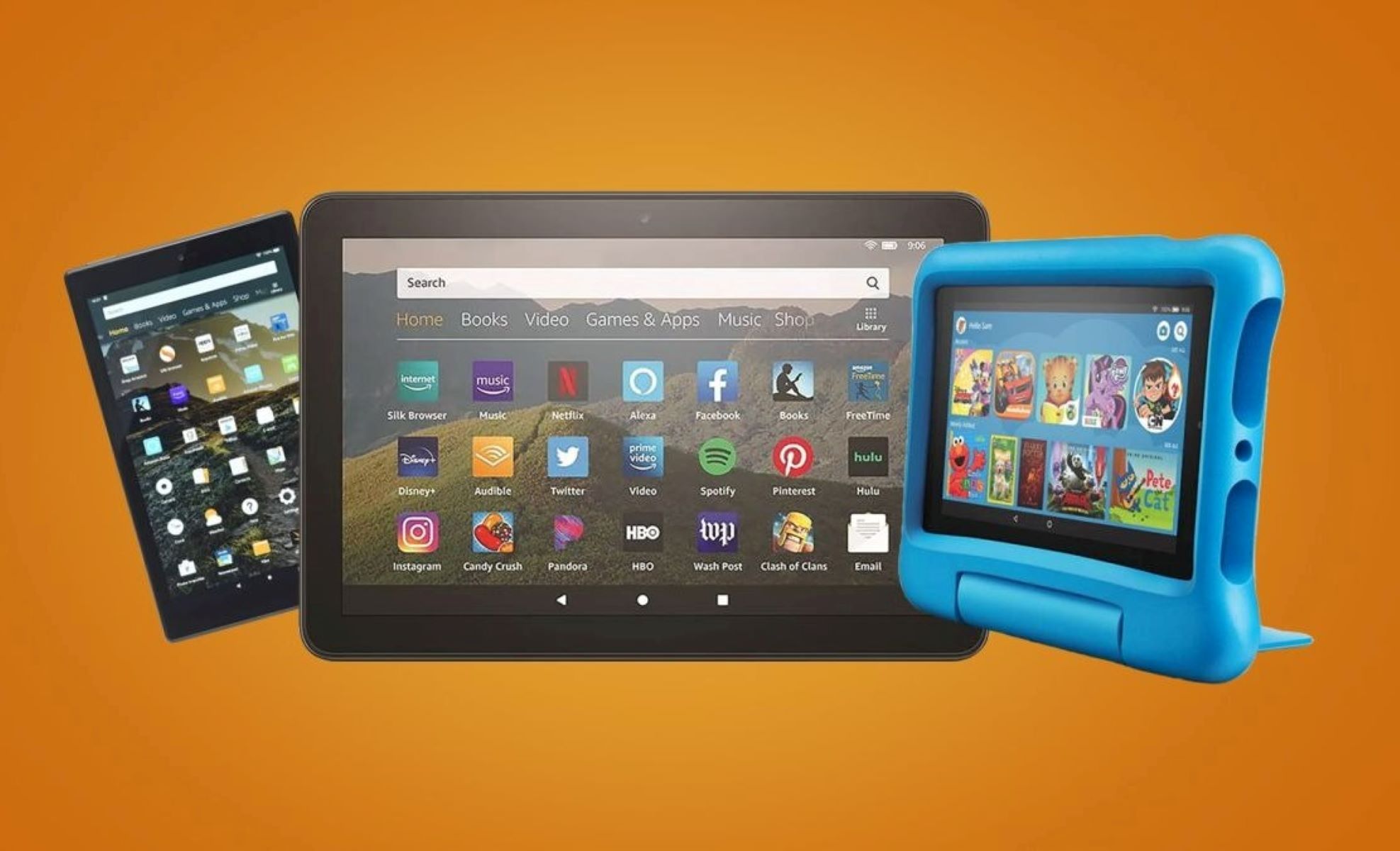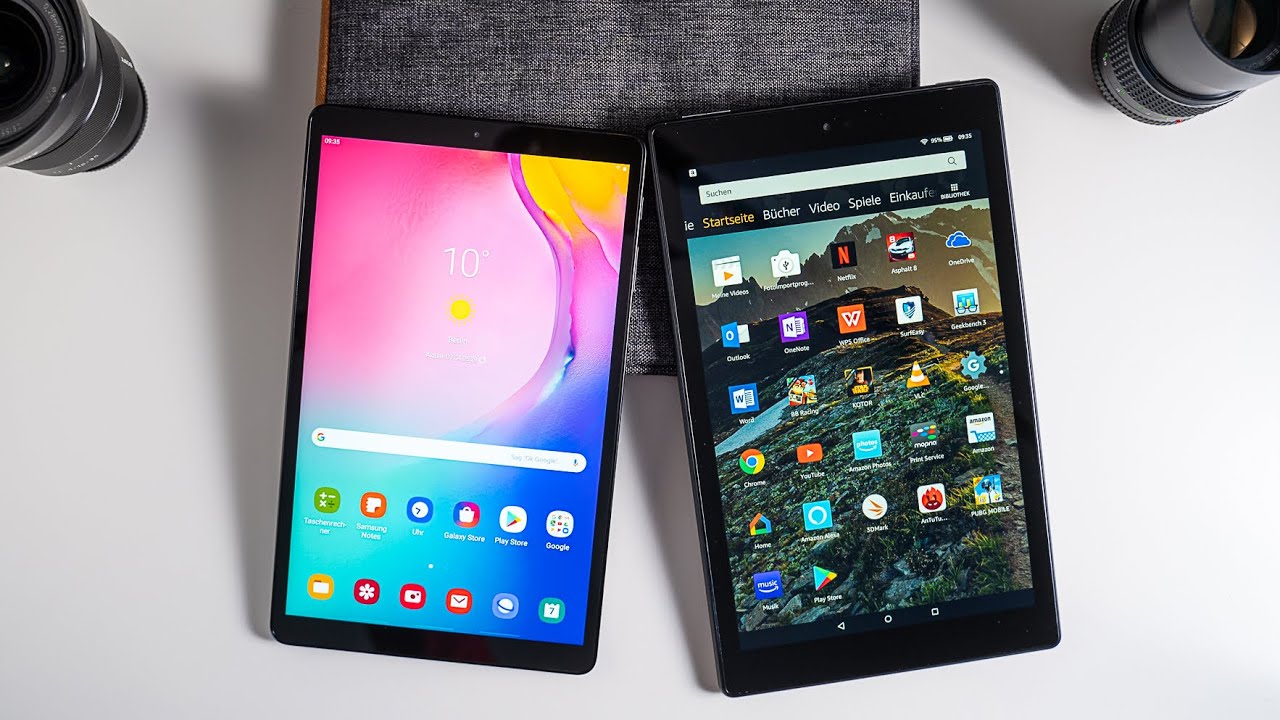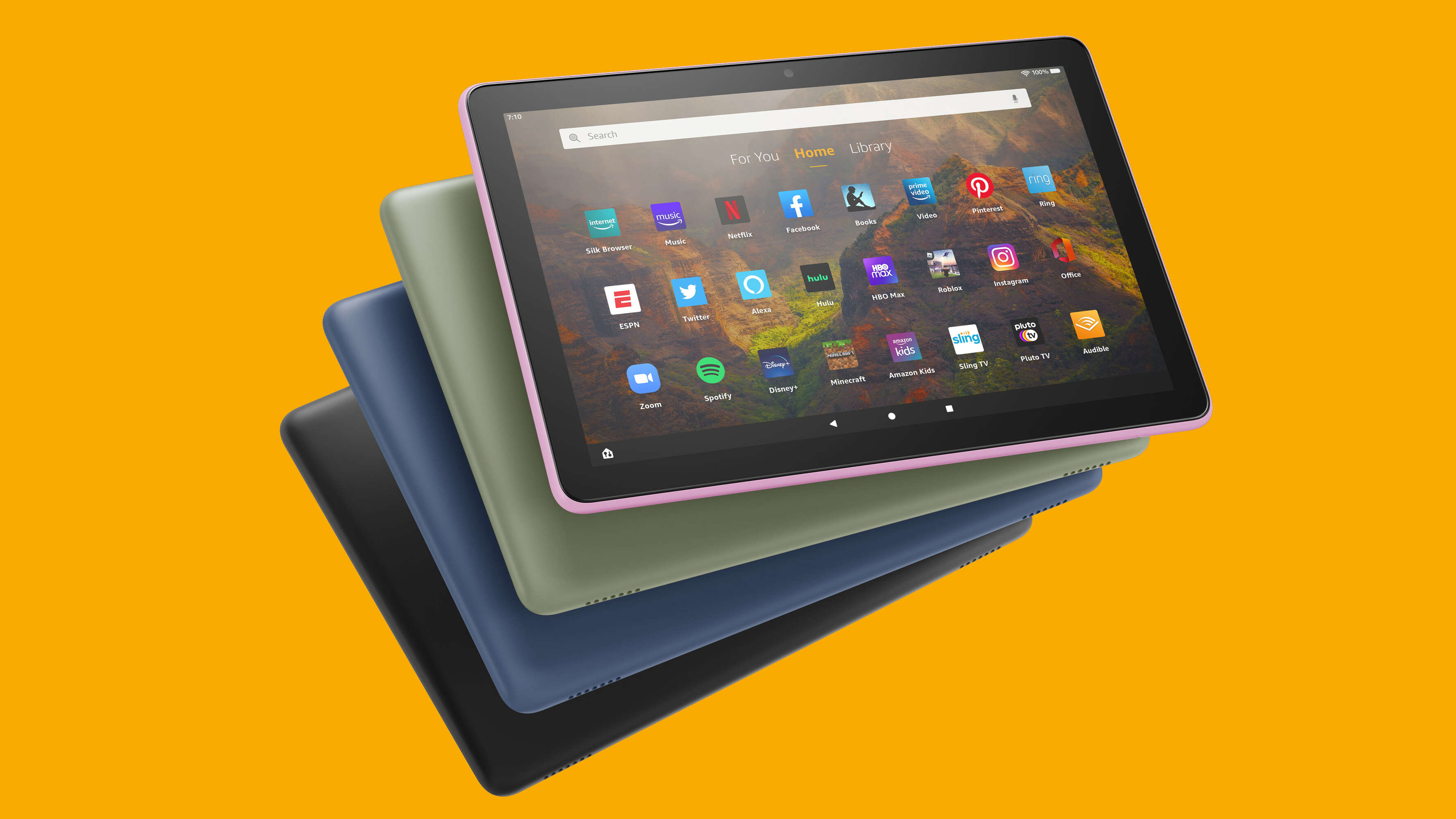Introduction
When it comes to choosing between a Kindle and a Fire Tablet, many avid readers find themselves torn. Both devices offer an array of features and functions that cater to different needs and preferences. Whether you’re an avid bookworm or someone who enjoys the versatility of a tablet, it’s important to understand the key differences between these two devices before making a decision.
Kindle, developed by Amazon, is renowned for its seamless reading experience, while Fire Tablet provides a wider range of multimedia capabilities with its full-color touchscreen and access to various apps and games. Both devices have their unique strengths, and the “better” option ultimately depends on your individual requirements.
In this article, we will delve into the hardware and software differences between Kindle and Fire Tablet, explore their reading experiences, compare their accessibility features, battery life, display and audio quality, storage options, app availability, and of course, the price. By the end of this comparison, you will have a clearer picture of which device is better suited to your needs and preferences.
So, without further ado, let’s dive into the world of e-readers and tablets and explore which one reigns supreme: Kindle or Fire Tablet.
Hardware Comparison
When it comes to choosing between a Kindle and Fire Tablet, the hardware is one of the most important factors to consider. The two devices have distinct features that cater to different needs and preferences.
Kindle is primarily designed for reading, and its hardware reflects this purpose. The device is lightweight, with a comfortable grip that allows for extended reading sessions without straining your hand. It features an E Ink display, which mimics the appearance of ink on paper, providing a paper-like reading experience even in bright sunlight. The e-ink display is easy on the eyes, reducing eye strain and allowing for enjoyable reading for hours on end.
On the other hand, Fire Tablet is designed to offer a broader range of functionality beyond just reading. It features a full-color touchscreen display that allows for vibrant multimedia experiences, including watching videos, playing games, and browsing the internet. The touchscreen enables smooth navigation through apps, websites, and content, making the tablet a versatile device for entertainment and productivity.
Another hardware aspect to consider is the size and form factor. Kindle is available in different sizes, including compact and lightweight options that are ideal for on-the-go reading. The smaller sizes make them easy to slip into a bag or pocket, ensuring that you always have your favorite books at your fingertips. Fire Tablet, on the other hand, tends to have larger sizes, which provide a better screen real estate for multimedia consumption and productivity tasks.
Both devices offer connectivity options, such as Wi-Fi and some models include cellular data. However, it’s worth noting that the Kindle’s cellular connectivity is specifically designed for downloading books and accessing the Kindle store, while the Fire Tablet’s cellular connectivity extends to all internet-based activities.
Overall, when comparing the hardware of Kindle and Fire Tablet, it boils down to your specific needs. If you prioritize a lightweight reading experience with a display that mimics the appearance of ink on paper, then Kindle is the way to go. However, if you’re looking for a more versatile device that offers multimedia capabilities along with the ability to read, browse the internet, and use various apps, then Fire Tablet would be the better choice.
Operating System Comparison
The operating system (OS) is a crucial aspect to consider when choosing between a Kindle and a Fire Tablet. The OS determines the user interface, app accessibility, and overall functionality of the device.
Kindle devices come with their own proprietary operating system, known as Kindle OS or the Kindle E-reader software. This OS is specifically designed for a seamless reading experience, with a focus on easy navigation of books, customizable reading settings, and integration with the Kindle store for easy book purchases and downloads. While the Kindle OS does not offer the same breadth of features as a full-fledged tablet operating system, it does provide a dedicated and optimized environment for reading.
Fire Tablets, on the other hand, run on the Amazon Fire OS. This operating system is based on Android and is tailored for a tablet experience. It offers a more robust and versatile platform with a user-friendly interface, access to a wide range of apps and games from the Amazon Appstore, and integration with various Amazon services such as Prime Video, Prime Music, and Audible.
One of the key advantages of the Fire OS is its compatibility with popular streaming services such as Netflix, Hulu, and Spotify. This makes Fire Tablets an excellent choice for multimedia consumption and entertainment. Additionally, Fire Tablets also offer functionalities like web browsing, email access, and productivity apps, allowing users to accomplish tasks beyond reading.
Both Kindle and Fire Tablets allow you to sync your reading progress and annotations across devices using Amazon’s Whispersync technology, ensuring a seamless transition between different devices within the same ecosystem.
In summary, while Kindle devices offer a dedicated reading experience with their own optimized operating system, Fire Tablets provide a more versatile platform with access to a wider range of apps and multimedia content. The choice between the two operating systems depends on whether you prioritize a focused reading experience or desire additional functionality and entertainment options.
Reading Experience
One of the primary factors to consider when choosing between a Kindle and a Fire Tablet is the reading experience they offer. While both devices allow you to read eBooks, they have different features and technologies that contribute to the overall reading experience.
Kindle, as the name suggests, is designed specifically for reading. It utilizes E Ink technology, which mimics the appearance of ink on paper. This results in a glare-free display that’s easy on the eyes, even in bright sunlight. The E Ink display also offers a higher contrast ratio compared to traditional LCD screens, making the text appear sharper and more readable.
Kindle devices also come with built-in adjustable front lights, allowing you to read in low light or complete darkness without straining your eyes. This is particularly beneficial for nighttime reading or situations where external lighting may be limited. The ability to control the brightness and font size further enhances the reading experience, catering to individual preferences.
One of the standout features of Kindle is its extensive library of eBooks. The Kindle store offers a vast selection of books, including bestsellers, classics, and self-published titles. Kindle users also have access to Kindle Unlimited, a subscription service that allows you to borrow and read an unlimited number of books for a monthly fee. The integration with the Kindle store and the ease of browsing, purchasing, and downloading books directly to your device make the reading experience seamless and convenient.
On the other hand, Fire Tablets offer a more versatile reading experience. While not specifically designed for reading like the Kindle, they provide a full-color touchscreen display and support for multimedia content. This means that you can not only read eBooks but also enjoy interactive elements, images, and illustrations that may be present in certain books.
Fire Tablets also offer features like Word Runner, which allows you to read at your own pace by displaying one word at a time rapidly. This feature can help improve reading speed and comprehension for those who want to challenge themselves.
Overall, if you prioritize a dedicated and focused reading experience with a display that closely resembles ink on paper, then Kindle is the better choice. However, if you enjoy a more versatile reading experience with the added benefits of multimedia capabilities, interactive content, and access to a broader range of eBooks, then a Fire Tablet may be a more suitable option.
Accessibility Features
When it comes to accessibility features, both Kindle and Fire Tablet have options that cater to different user needs. These features ensure that individuals with disabilities or specific accessibility requirements can still enjoy the benefits of e-reading and tablet devices.
Kindle devices offer several accessibility features that enhance the reading experience for users with visual impairments. The adjustable font size allows users to enlarge the text to a comfortable and readable size, making it accessible for those with low vision. Kindle also supports font customization, enabling users to choose from various font styles and sizes that suit their preferences.
In addition to font adjustments, Kindle devices also support the VoiceView screen reader, which provides audio feedback for menus, options, and book content. This feature assists individuals with visual impairments in navigating the device and accessing their desired content.
Fire Tablets, as more versatile devices, offer a wider range of accessibility features. The devices come with built-in screen magnification capabilities, allowing users to enlarge the entire screen or specific areas for improved visibility. This is particularly helpful for those with low vision or visual impairments.
Fire Tablets also offer options for color correction and color inversion, catering to individuals who have color vision deficiencies. These accessibility settings enhance the reading experience by adjusting the display to accommodate different color perception needs.
For users with hearing impairments, both Kindle and Fire Tablet offer support for Bluetooth-enabled headphones and speakers. This allows individuals to enjoy audiobooks, text-to-speech functionality, and multimedia content with clear and amplified sound.
Furthermore, Fire Tablets provide an array of accessibility options for individuals with physical disabilities. The devices support the use of external assistive devices such as switch control and Bluetooth keyboards, enabling users with limited dexterity or mobility to navigate the device and interact with their content easily.
Overall, both Kindle and Fire Tablet offer commendable accessibility features that aim to make reading and using the devices more inclusive for individuals with diverse needs. Choosing between the two depends on the specific accessibility features that are crucial for your particular requirements.
Battery Life
When it comes to portable devices, battery life is a vital consideration. Neither Kindle nor Fire Tablet will be of use if they constantly require charging. Fortunately, both devices are designed to give you long hours of uninterrupted reading or usage.
Kindle devices are renowned for their impressive battery life. Thanks to the low power consumption of e-ink displays, Kindle e-readers can last for weeks, sometimes even months, on a single charge. This exceptional battery life is a result of the minimal power requirements of e-ink technology, sustained by occasional refreshes of the display when turning pages.
Fire Tablets, being more versatile and multimedia-centric, tend to have slightly shorter battery lives compared to Kindle devices. However, they still offer respectable battery performance. With moderate usage, you can expect a Fire Tablet to last for several hours on a single charge. The exact duration will depend on factors such as screen brightness, app usage, and ongoing background activities.
It’s important to note that battery life can vary depending on the specific device model, usage patterns, and device settings. Intensive tasks such as gaming or video streaming will consume more power and drain the battery faster. Conversely, using the device primarily for reading or in airplane mode can significantly extend its battery life.
Both Kindle and Fire Tablet devices feature sleep mode or standby functionality, which preserves battery life when the devices are not in active use. This feature is particularly useful for Kindle devices, as they can go into sleep mode automatically when you close the protective cover or after a period of inactivity.
It’s worth considering that Kindle e-readers tend to have faster charging times compared to Fire Tablets. The e-ink technology used in Kindles allows for quicker battery top-ups, allowing you to get back to your reading faster.
In summary, Kindle devices excel in terms of battery life, offering weeks or even months of usage on a single charge. Fire Tablets, while offering shorter battery life due to their more demanding features, still provide several hours of usage for multimedia consumption and app usage. Understanding your usage patterns and requirements will help you prioritize either extended battery life or the more extensive features offered by Fire Tablets.
Display Quality
The display quality of a device can significantly impact the reading and viewing experience. When comparing the display quality of Kindle and Fire Tablet, there are several factors to consider, including screen type, resolution, and color reproduction.
Kindle devices utilize E Ink technology, which provides a display that closely resembles ink on paper. This technology creates a matte and non-reflective screen, which makes reading comfortable, even under bright sunlight. The E Ink display offers excellent contrast and sharpness, resulting in clear and crisp text that is easy on the eyes. However, Kindle devices do not offer color displays, as they are designed primarily for reading.
Fire Tablets, on the other hand, boast full-color LCD or IPS (In-Plane Switching) displays. These displays offer vibrant and rich colors, making them ideal for multimedia and graphic-intensive content. The higher resolution of Fire Tablets, compared to Kindle devices, enhances image and video quality, providing a more immersive visual experience.
Fire Tablets also offer adjustable screen brightness, allowing you to optimize display settings based on your environment and personal preferences. This feature ensures that you can read or view content comfortably in a variety of lighting conditions.
It’s important to note that the choice between E Ink and color displays depends on your primary use case. Kindle devices with E Ink displays excel in providing a paper-like reading experience, with sharp and clear text that reduces eye strain. On the other hand, Fire Tablets’ color displays are better suited for multimedia consumption, including watching videos, playing games, and viewing images.
It’s also worth noting that Kindle devices offer excellent visibility in sunlight, as the E Ink display minimizes glare and reflection. In contrast, Fire Tablets’ color displays may be more prone to glare, particularly under direct sunlight.
In summary, Kindle devices offer high-quality E Ink displays that closely resemble ink on paper, resulting in clear and sharp text. Fire Tablets, with their full-color LCD or IPS displays, provide vibrant colors and higher resolutions, making them suitable for multimedia content. Choosing between the two depends on whether your primary focus is reading or if you desire a more versatile device for multimedia consumption.
Audio Quality
While Kindle and Fire Tablet devices are primarily designed for reading, they also offer audio capabilities for a multimedia experience. Understanding the audio quality of each device is essential for those who enjoy listening to audiobooks, music, or other forms of audio content.
Kindle devices, particularly the newer models, feature built-in speakers or a headphone jack for audio output. The audio quality of Kindle devices is sufficient for listening to audiobooks, as well as sounds and music within e-books. However, due to their focus on reading, the audio quality might not match the immersive experience offered by dedicated audio devices or Fire Tablets.
On the other hand, Fire Tablets offer more enhanced audio capabilities. They come equipped with stereo speakers that can deliver better sound quality and a more immersive audio experience. The placement of the speakers on Fire Tablets is typically optimized to provide a richer and more balanced sound stage.
Fire Tablets also support Bluetooth connectivity, allowing you to connect wireless headphones or speakers for a more personalized and immersive audio experience. This feature is beneficial if you prefer using high-quality external audio devices or if you want to enjoy audio content without disturbing others.
Moreover, Fire Tablets offer access to various audio streaming apps and services, such as Prime Music, Spotify, and Audible, which enhance the audio experience and provide a wide range of audio content options.
It’s important to note that while both Kindle and Fire Tablet devices offer audio capabilities, they are not primarily designed as standalone audio devices. If audio quality is of utmost importance and you are primarily looking for a device for music or audio consumption, dedicated audio devices like MP3 players or headphones may provide a more superior audio experience.
Considering the audio quality of Kindle and Fire Tablet devices is crucial if you plan to utilize the audio capabilities for audiobooks, music, or other audio content. Fire Tablets, with their better speaker quality and support for Bluetooth connectivity, provide a more enhanced audio experience compared to Kindle devices.
Storage Options
Storage capacity is an important consideration when choosing between a Kindle and a Fire Tablet, as it determines how many books, apps, and media files you can store on your device.
Kindle devices generally offer multiple storage options depending on the model. The storage capacities typically range from 4GB to 32GB or more, providing ample space for storing thousands of e-books. This is especially beneficial for avid readers who enjoy having a vast library at their fingertips. It’s important to note that Kindle devices primarily focus on storing e-books and do not support external memory expansion through SD cards.
Fire Tablets, on the other hand, offer different storage capacity options as well as the ability to expand storage using a microSD card. This allows users to increase the available storage space to accommodate a larger number of apps, games, videos, music, and other media files. The expandable storage feature is particularly useful for users who want to carry a vast collection of media files or those who plan to use their device for entertainment purposes.
The amount of storage you need will depend on your usage requirements. If you primarily use your device for reading and have a moderate collection of e-books, then Kindle devices with their built-in storage options should be sufficient. However, if you plan to use your device for multimedia consumption, gaming, or downloading a variety of apps and files, a Fire Tablet with expandable storage may be a more suitable choice.
It’s also worth noting that both Kindle and Fire Tablet devices offer cloud storage options. This allows you to store your content in the cloud, freeing up space on your device and ensuring your content is accessible from any device with an internet connection.
In summary, Kindle devices offer built-in storage options that are well-suited for storing e-books, while Fire Tablets provide more flexibility with expandable storage. Assess your storage needs based on the type of content you plan to store and the extent of your collection to determine which option best fits your requirements.
App Availability
The availability of apps is an important consideration, especially for those seeking a versatile device that goes beyond reading. Kindle and Fire Tablet devices have different app availability due to their distinct operating systems and ecosystems.
Kindle devices, with their dedicated e-reader software, have a more limited selection of apps compared to Fire Tablets. The Kindle store primarily focuses on providing e-book content, and while it does offer some apps for things like notes, calendars, or weather updates, the variety is more limited compared to other app stores.
On the other hand, Fire Tablets, running on the Amazon Fire OS, offer access to a wide range of apps through the Amazon Appstore. This app store features a broad selection of popular apps, games, productivity tools, streaming services, and more. This wide app availability makes Fire Tablets more versatile and capable of fulfilling various needs beyond reading.
Fire Tablets provide access to popular streaming services like Netflix, Hulu, Prime Video, Spotify, and many others. They also offer productivity apps, social media platforms, and other utilities, allowing users to browse the web, check emails, and stay connected with friends and family.
It’s important to note that while Fire Tablets offer a more extensive app library, they do not have access to the full range of apps found on other Android-based devices like smartphones or tablets. Some apps that are widely available on the Google Play Store may not be available in the Amazon Appstore.
However, Fire Tablets do provide an option to side-load apps from other sources, although it requires some technical knowledge and may not be suitable for all users or all apps.
In summary, if your primary focus is on reading and you don’t require extensive app functionality, Kindle devices with their limited app availability will suffice. But if you desire a more versatile device with access to a wide range of apps for entertainment, productivity, and other purposes, Fire Tablets with the Amazon Appstore will provide a broader selection to choose from.
Price Comparison
When it comes to choosing between a Kindle and a Fire Tablet, the price is an important factor to consider. The devices have different price ranges based on their features, functionalities, and storage options.
Kindle devices generally have a lower starting price compared to Fire Tablets. They are designed primarily for reading and offer a dedicated e-reader experience. The prices for Kindle e-readers can vary depending on the model and storage capacity you choose. Typically, Kindle devices with higher storage capacities or additional features like cellular connectivity will have higher price points.
Fire Tablets, being more versatile and offering additional functionalities beyond reading, generally have a higher starting price compared to Kindle devices. The price of Fire Tablets varies based on factors such as screen size, storage capacity, and whether it includes additional features like cellular connectivity or a higher resolution display.
It’s important to take into account that Fire Tablets provide more flexibility in terms of storage options, with the ability to expand storage using a microSD card. This can make a difference in overall cost if you plan to store a large collection of media files or require extra storage space for apps and games.
Another factor to consider is whether you are a Prime member or plan to become one. Amazon often offers exclusive deals and discounts for Prime members, which can further impact the price of Kindle and Fire Tablet devices.
Ultimately, the price comparison between Kindle and Fire Tablet devices depends on your budget and the features you require. If you prioritize a dedicated reading experience and have a lower budget, a Kindle device might be the more cost-effective choice. However, if you desire a more versatile device with access to apps, multimedia capabilities, and expandable storage, a Fire Tablet may offer better value for your money.
Consider your needs, preferences, and budget to determine the device that provides the best combination of features and affordability for you.
Conclusion
After comparing the hardware, operating systems, reading experiences, accessibility features, battery life, display quality, audio quality, storage options, app availability, and price between Kindle and Fire Tablet devices, it’s clear that each device offers its own unique strengths and caters to different needs.
If your primary focus is on reading and you prefer a dedicated device with a paper-like display, lightweight design, and a seamless reading experience, then a Kindle device is the better choice. Kindle devices excel in providing an optimized reading environment, extended battery life, and a wide selection of e-books available through the Kindle store.
On the other hand, if you desire a more versatile device that goes beyond reading and offers a broader range of functionalities like multimedia consumption, gaming, web browsing, and access to a wide variety of apps, then a Fire Tablet is the more suitable option. Fire Tablets provide vibrant color displays, enhanced audio capabilities, expandable storage, and access to the Amazon Appstore, offering a more multimedia-centric experience.
Ultimately, the decision between a Kindle and a Fire Tablet depends on your individual preferences, usage patterns, and budget. Assess your primary needs – whether they are centered around reading or the desire for a versatile, multimedia device – and consider factors such as battery life, storage options, and app availability to make an informed decision.
No matter which device you choose, both Kindle and Fire Tablet offer reliable and user-friendly options for digital reading and beyond. So, whether you’re a dedicated bookworm or a multimedia enthusiast, you can find a device that suits your needs and enhances your overall digital experience.







